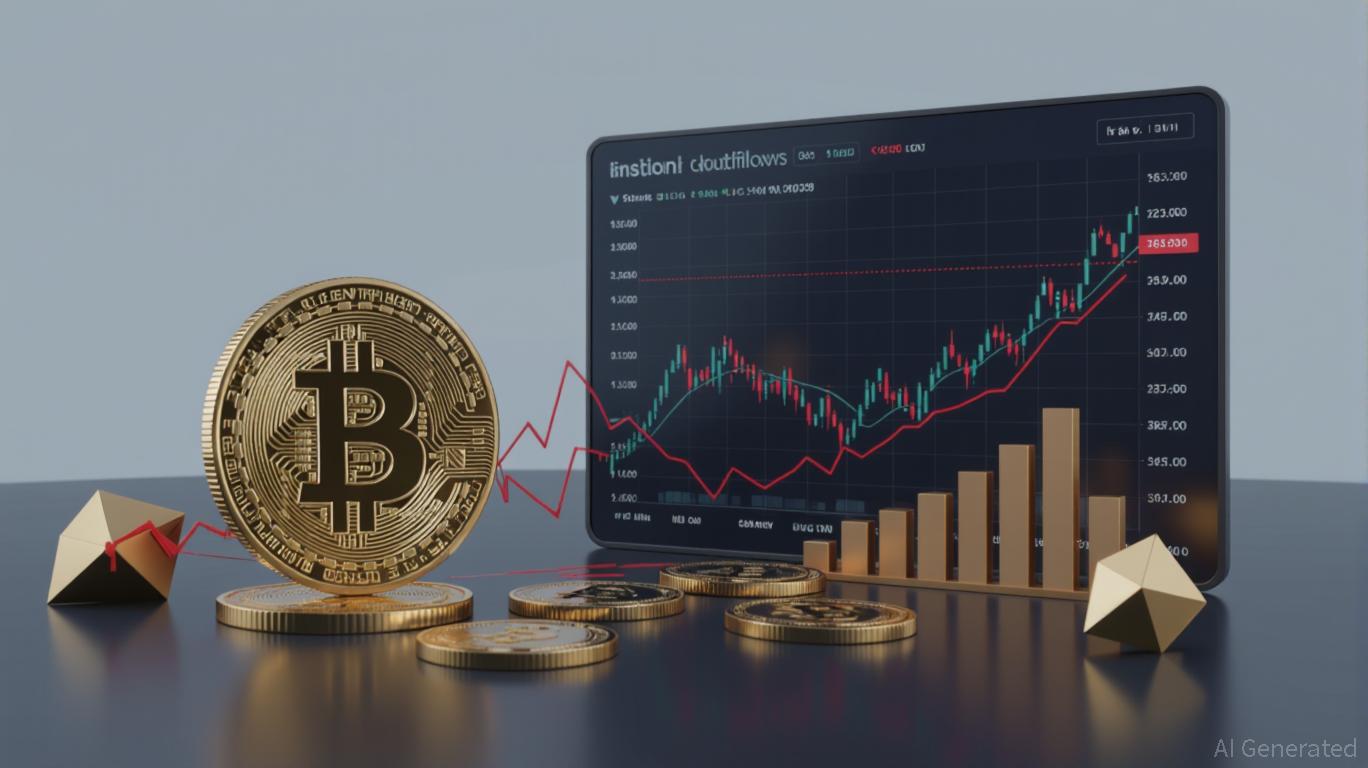Drivers of the Latest BTC Downturn: Institutional Withdrawal or Excessive Market Correction?
- Bitcoin's recent crash reflects $3.2B in institutional outflows since October, driven by liquidity stress and macroeconomic uncertainty. - Major ETFs like BlackRock's IBIT ($463M) and Fidelity's FBTC face massive redemptions as investors recalibrate risk profiles amid tightening financial conditions. - Structural shifts like Singapore's institutional-grade crypto futures signal long-term optimism, but coincide with Fed's restrictive policy (3% inflation) forcing deleveraging. - The correction appears liq
The recent
Institutional Outflows: Indication of Liquidity Pressure
For three straight weeks, institutional players have been net sellers of Bitcoin and other digital assets, with November 2025 seeing the biggest weekly withdrawal since February 2025.
These withdrawals are part of a larger trend rather than isolated incidents.

Structural Changes: Connecting Traditional Finance and Crypto
Even with recent outflows, the institutional crypto sector is experiencing significant structural evolution.
Yet, these advancements are happening alongside a liquidity squeeze, raising doubts about whether structural improvements can counteract immediate economic pressures. The financial industry’s gradual move away from bank-centric lending—where
Macroeconomic Challenges: The Fed’s Influence on Risk Appetite
The Federal Reserve’s approach to inflation continues to play a pivotal role.
The Fed’s policy direction also affects borrowing expenses for leveraged institutional investors. Rising interest rates make margin trading more costly, prompting crypto funds to reduce their exposure—a process that can speed up price drops. This highlights how broader economic conditions are not just background factors, but actively shape institutional strategies.
Crash or Overreaction?
The combination of these elements points to a mixed scenario. While long-term optimism is reflected in structural changes like SGX’s regulated futures, immediate economic challenges are prompting short-term withdrawals.
For investors, the challenge is to separate short-lived volatility from deeper, structural shifts. The rollout of institutional-grade products points to a maturing market, but their success will depend on whether the broader economic environment stabilizes. Until then, the
Disclaimer: The content of this article solely reflects the author's opinion and does not represent the platform in any capacity. This article is not intended to serve as a reference for making investment decisions.
You may also like
Grab and StraitsX Connect Web2 and Web3 Through Stablecoin Transactions
- Grab partners with StraitsX to build Web3 wallets and stablecoin payment networks across Asia, targeting cross-border transaction efficiency. - The integration enables real-time, low-cost settlements using XSGD/XUSD stablecoins while maintaining AML/CTF compliance for merchants and users. - By addressing fragmented payment systems and high fees, the initiative aims to position Southeast Asia as a regulated digital asset innovation hub. - Aligning with Asia's $300B stablecoin market growth projections, th

Vitalik Buterin Champions ZK-SNARKs: Opening New Avenues for Investment Amid Ethereum's Scalability Transformation
- Vitalik Buterin champions ZK-SNARKs as Ethereum's scalability solution, endorsing ZKsync's 15,000 TPS Atlas upgrade for seamless Layer 1-2 liquidity. - ZKsync's Fusaka upgrade (Dec 2025) aims to double throughput to 30,000 TPS, while partnerships with Deutsche Bank/Citi highlight institutional demand for confidential transactions. - ZK protocols reached $3.5B TVL in Q3 2025, with ZK token surging 50% post-endorsement, reflecting market confidence in ZK's utility and economic resilience. - ZKsync faces co
Ethereum Updates: Major Ethereum Holder Moves Funds, Mirroring Pre-Surge Trends as Investors Watch for Market Steadiness
- A whale withdrew $82.9M in ETH from an exchange, sparking market bottoming speculation as exchange-held supply declines, a historical precursor to crypto rallies. - Analysts highlight "morning star" candlestick patterns and RSI resets on ETH charts, suggesting potential outperformance over Bitcoin and stabilization above key moving averages. - Resilient 30-day transaction volume and institutional accumulation signals contrast with ETF sell-off pressures, though $10,000 price targets face risks from U.S.
Zcash (ZEC) Price Rally as Privacy Coins Recover: Exploring the Drivers and Evaluating Long-Term Investment Potential
- Zcash (ZEC) surged over 7% in 24 hours after Cypherpunk Technologies' $58.88M institutional purchase, pushing prices to a $700+ multi-year high in late September 2025. - The firm's Zcash Digital Asset Treasury aims to accumulate 5% of ZEC supply, positioning it as a privacy-compliant alternative to fully anonymous coins like Monero amid tightening global crypto regulations. - Zcash's optional shielded transaction model using zk-SNARKs offers regulatory flexibility, attracting institutional backing from G